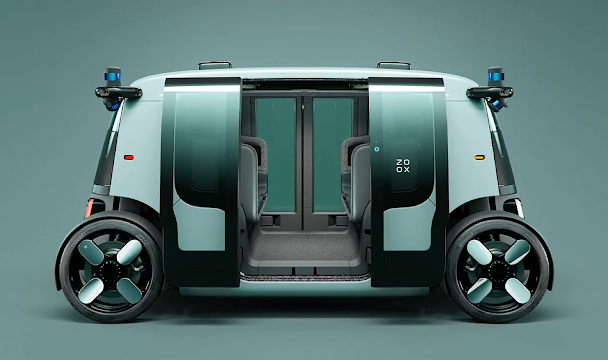After a few disappointing years, these are finally coming into their own. The expert I talked (EDIT: I try to mostly preserve anonymity in this post, but this person has kindly allowed me to identify him as Andrew Miller of Changing Lanes) to said Tesla had made some bad decisions and was no longer in the top tier, but that companies like Waymo and [I can’t remember which other ones he named] were near the finish line. They’re already safer than humans in most situations and operating successfully in several cities. The remaining challenges to scaling up are mostly regulatory, not technical. Here the regulatory challenges are less about specific laws than general nervousness on the corporations’ part to be seen expanding too quickly. They want to build a strong record in friendly cities before venturing further.
The most interesting new claim I heard was that self-driving cars could help the environment by encouraging carpools. The UberShare carpool program hasn’t taken off, but that’s mostly because people are reluctant to share a car with a stranger. Self-driving cars have more design flexibility, and you might be able to turn them into a series of private pods. You could sit in your own private pod while your robotaxi made a two-block detour to pick up a second passenger.
Here the person I talked to wasn’t as concerned about fighting destructive regulation (which mostly has yet to materialize) as using legislation to guide the technology on the right path. Self-driving taxis have a big advantage over self-driving self-owned-cars: they can operate 24-7 and never have to park. If you can switch half the car-using population to robotaxis, you can convert half the parking lots into green space or homes. Nobody wants to ban self-driving car ownership, but some people do want to nudge the marginal commuter into robotaxis so they can reclaim slightly-more-than-half of the parking lots instead of slightly-less.
The most interesting new claim I heard was that self-driving cars could help the environment by encouraging carpools. The UberShare carpool program hasn’t taken off, but that’s mostly because people are reluctant to share a car with a stranger. Self-driving cars have more design flexibility, and you might be able to turn them into a series of private pods. You could sit in your own private pod while your robotaxi made a two-block detour to pick up a second passenger.
Here the person I talked to wasn’t as concerned about fighting destructive regulation (which mostly has yet to materialize) as using legislation to guide the technology on the right path. Self-driving taxis have a big advantage over self-driving self-owned-cars: they can operate 24-7 and never have to park. If you can switch half the car-using population to robotaxis, you can convert half the parking lots into green space or homes. Nobody wants to ban self-driving car ownership, but some people do want to nudge the marginal commuter into robotaxis so they can reclaim slightly-more-than-half of the parking lots instead of slightly-less.
by Scott Alexander, Astral Codex Ten | (Notes From The Progress Studies Conference) - Read more:
Image: Amazon/Zoox
[ed. The Zoox website is really something. Check it out.]
